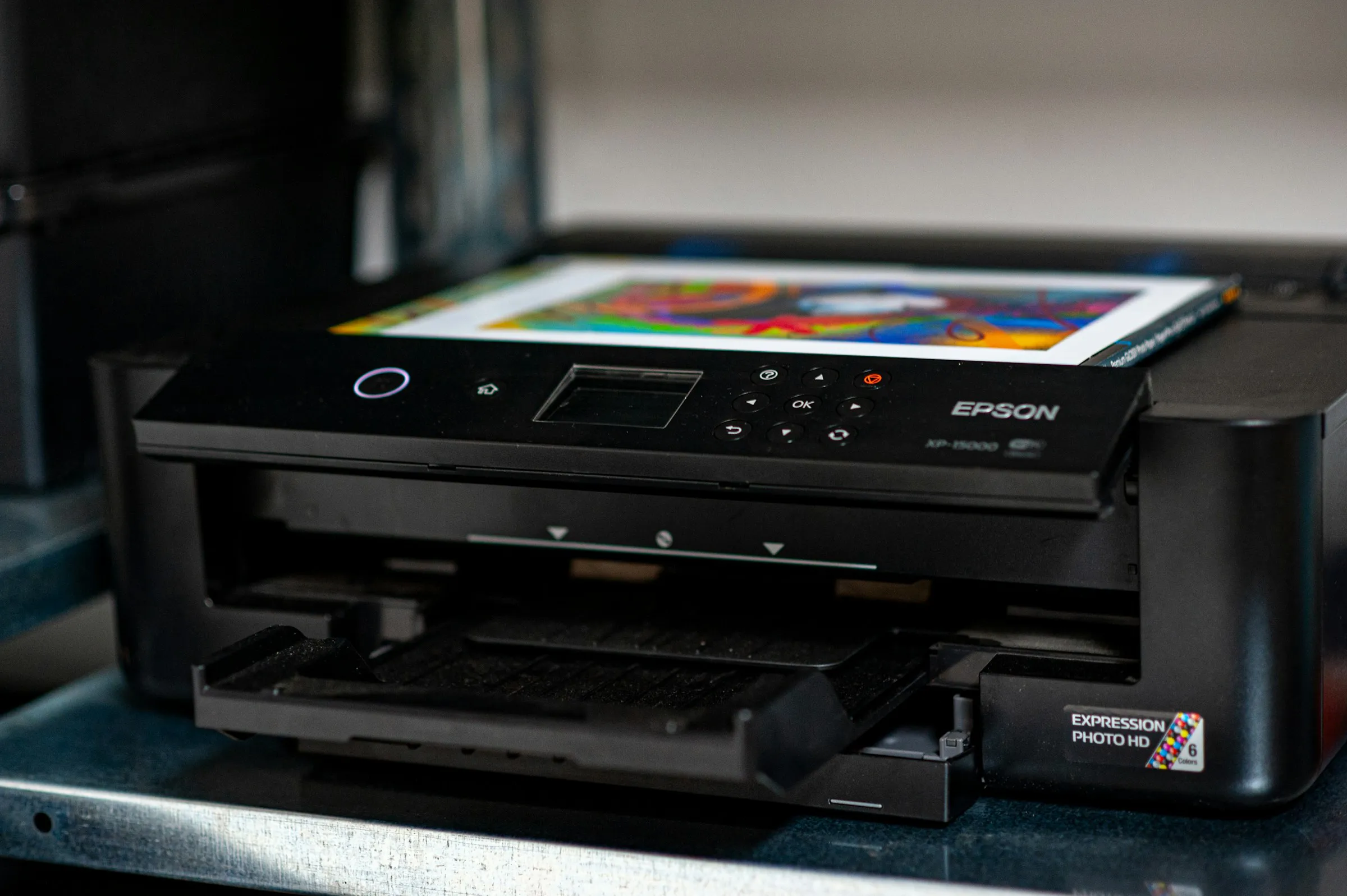Printers seem to pick the worst possible moment to stop working: perhaps a peak sales season, the end of a financial quarter, or when you absolutely need a high-volume print run done. That’s because, as print volumes surge, the stress on every part of the print infrastructure increases.
Often, these malfunctions aren’t simply random misfortunes but are symptomatic of underlying issues in your print environment. In this blog, we’ll explore why these breakdowns so often happen when you least expect them, and what you can do to get ahead of the game with efficient print solutions for logistics.
What Causes Printer Problems During High-Volume Periods?
When you experience surges in printing, that’s exactly when your printers are most vulnerable to failure. Below are the main contributors to printer problems under heavy load:
High-Volume Printing Surges
When your organization is printing large volumes, think about sales events, product launches, busy quarter-ends, or holiday-season shipping, the demands on your print fleet soar.
The machines are pushed harder, there are more jobs queued, and more opportunities for paper jams, overheating, or component wear. These surges often reveal weaknesses in the equipment or process that might sit dormant during quieter times.
Outdated or Aging Devices
Print devices, like any hardware, have finite lifespans. Older machines may lack the robustness, speed, and capacity required for high-volume output. Components wear out, such as rollers that get slick or cracked, fuses that degrade, firmware that becomes outdated, and parts that become harder to find or more expensive.
Lack of Preventive Maintenance
Many organizations only think about servicing printers when something goes wrong. Missing preventive tasks like cleaning, firmware updates, checking wear items (rollers, belts, fusers), or aligning devices leaves you vulnerable.
During a heavy printing period, failure to perform preventive maintenance amplifies the risk of breakdowns, misfeeds, or quality problems, and those translate into major printer problems when you need reliability the most.
Low or Mismanaged Supplies
Running out of toner, using incompatible or poor-quality supplies, or failing to replenish wear components in time all impact print output. Poor margins on supply management contribute to printer problems like streaking, clogged printheads, faint prints, double feeds, or more serious mechanical issues.
Discover the Ideal Managed Print Services for Your Business
Schedule a 30-minute consultation today to see how our customized Managed Print Services can reduce downtime, prevent printer problems, and optimize your entire print fleet for peak performance. Schedule your consultation today!
5 Hidden Costs of Printer Downtime
When your print fleet goes down, it’s not just the cost of the repair call or the meter counts. Printer problems during high-volume periods trigger a chain of hidden, often unmeasured costs:
- Lost productivity: Every minute a printer is unavailable can cost the users who depend on it. Employees may wait, queue jobs at other devices, shift tasks to idle time, or resort to manual workarounds.
- Delayed deliverables: In environments where printed materials are critical (billing, proposals, contracts, marketing collateral), printer downtime can delay key deadlines. That may mean late shipments, missed invoicing cycles, or a damaged client relationship.
- Increased error rates and rework: When a printer suddenly fails, users might attempt workaround solutions, such as printing fewer pages, splitting jobs, or using lower‐quality devices. That increases the chance of mistakes (wrong media, folded prints, misaligned pages) and the need for reprinting.
- Higher maintenance and replacement costs: Frequent printer problems often mean more service calls, more parts replaced, and more emergency interventions. The long‐term cost of reactive maintenance is higher than planned upkeep.
- Disrupted workflows and hidden inefficiencies: A broken printer doesn’t just stand idle — it influences how people behave. They may shift loads across devices, send more print jobs to avoid risk, or just decide to go digital and eliminate print (which may or may not suit the business).

How Managed Print Services (MPS) Prevent Printer Problems and Failures
When you engage with a provider offering comprehensive Managed Print Services, you shift from reactive firefighting to proactive performance. Here’s how a well-structured Managed Print Services program intercepts printer problems before they spiral out of control:
Proactive Device Monitoring and Alerts
An effective Managed Print Services program continuously monitors your print devices, such as page counts, error logs, toner/ink levels, device health, and firmware status when alert thresholds are crossed (say, a roller nearing the end of life or excessive errors on the feeder), your service provider can act before a job fails.
Automated Toner and Supply Fulfillment
One of the most common causes of print-job stoppage is supply failure, such as empty toner cartridges, incompatible parts, or worn components. Managed Print Services automatically tracks usage and schedules fulfillment of consumables so you never run out mid-print.
This avoids those “out of toner” panic moments during high-volume periods and helps prevent printer problems related to improper or delayed supplies.
Streamlined Service Scheduling
With Managed Print Services, service response is built into the ecosystem. When a device signals an issue (via remote monitoring) or hits a usage milestone, the provider dispatches a technician, pre-stocks parts, or arranges loaner devices.
This level of service reduces the downtime duration when device failures do occur. Instead of waiting hours for a technician to identify the fault and order parts, you get planned maintenance executed quickly.
Secure Device Management and Access Control
Modern print fleets are part of the broader network and must abide by security policies. Managed Print Services include secure print release, user-access permissions, firmware updates, and device lockdowns. By controlling who can print, what they can print, and when the device firmware updates, you reduce not only printer problems but also operational risk.
In fact, a well-implemented Managed Print Services program can strengthen print security while lowering overall printing expenses by as much as 20% to 30%, helping organizations protect data and budgets simultaneously.
Reporting and Workflow Insights
A Managed Print Service provider doesn’t just fix devices. They give you intelligence, such as how many prints per device, cost per page, usage by department, device reliability trends, and future equipment-refresh needs. This level of insight enables you to optimize your print fleet, retire under-performing devices, and prevent printer problems before they start.
Protect Your Office Printers Before It’s Too Late
Download our FREE ebook: 7 Vital Steps to Secure Your Print Environment — your essential roadmap to locking down print security.
Inside, you’ll uncover:
- Today’s biggest printing vulnerabilities
- How to build a print security game plan
- Proven strategies to mitigate risks and protect sensitive data
5 Quick Steps to Keep Your Print Feet Reliable
Even with Managed Print Services, internal teams can take proactive steps to support printer reliability. These actions strengthen your maintenance strategy and keep your entire print fleet assessment accurate and up to date:
1. Conduct a Full Inventory of All Print Devices
Start by cataloging every printer, copier, multifunction device in your environment: model, age, serial number, location, duty cycle, connectivity, firmware version, and last service date. A proper print fleet assessment helps you pinpoint older devices, such as those more prone to failure under stress, and identify units that may need replacement or upgraded maintenance.
2. Track Usage, Service Frequency, and Costs
Once you’ve inventoried your devices, track how much each device is used (page counts by month, colour vs mono, department). Also track how often each device has needed service or experienced downtime.
Calculate cost-per-page (including supplies and maintenance) to compare devices. With this data, you can identify which machines are underperforming, which are costing you more, and which are most prone to printer problems.
3. Implement User Access Restrictions and Permissions
Not every employee needs unrestricted printing capabilities. Setting access controls ensures printers are used appropriately and securely. Through Managed Print Services, you can assign permissions, set print quotas, or require authentication for sensitive jobs.
This not only prevents waste but also helps avoid accidental misuse that can lead to printer problems or security vulnerabilities.
4. Schedule Preventive Maintenance and Proactive Monitoring
Routine printer maintenance, such as cleaning rollers, updating firmware, and replacing worn parts, significantly reduces the risk of breakdowns. Schedule inspections quarterly or based on print volume.
Proactive monitoring tools, often included in Managed Print Services, track performance data to detect issues early. Combined, these strategies help extend the lifespan of your devices and ensure consistent uptime.
Set Up Alerts for Toner Levels and Potential Failures
Configure your print devices and monitoring systems to trigger alerts when toner/ink levels drop below specified thresholds, when service counters reach preset limits, and when error logs exceed safe levels. These alerts let you intervene before jobs fail and prevent full-scale printer problems.
Why Choose Proven IT to Keep Your Printers Running Smoothly
Choosing the right Managed Print Services partner makes all the difference in how effectively your business prevents printer problems. Proven IT’s comprehensive approach offers proactive management, detailed reporting, and security integration to keep your operations running at full speed.
Here’s why we stand out:
- Structured print setup for any fleet size: Whether you have ten printers in a small office or hundreds across multiple locations, we can tailor a program to your needs.
- Proactive monitoring to prevent downtime: With automated alerts, device dashboards, and service triggers, we keep watch over your fleet so you don’t have to catch issues before they become printer failures or major printer problems.
- User access control and cost predictability: Through usage tracking, user permissions, and cost-per-print metrics, you gain transparency and control over your print spending, and avoid surprise costs when devices fail or get overloaded.
- Security protection for devices and documents: We enforce secure printing, user authentication, firmware updates, and access logs to protect your workflows from risks that could otherwise lead to an unexpected failure or downtime.
- Professional account management: You’ll have a dedicated account manager, regular reviews, reporting, and optimization advice. This means your print environment is not simply “running,” it’s being continuously refined, and you avoid the common culprit of unmanaged print fleets.
Start Protecting Your Business’s Printing Operations with Proven IT
Printer breakdowns don’t have to be an inevitable part of busy seasons. With Managed Print Services, proactive printer maintenance, and a professional print fleet assessment, your business can eliminate surprise failures, cut costs, and keep every deadline on track.
Proven IT delivers the reliability, visibility, and protection you need to keep operations running without interruption, no matter how high your print volume climbs.






